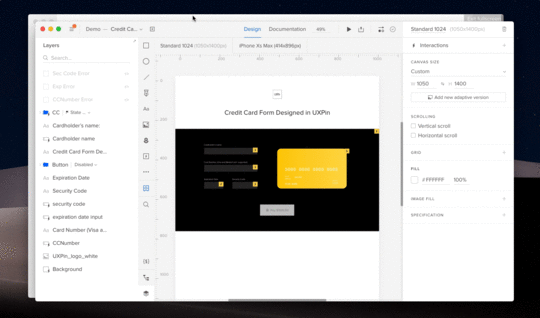8 Years on the Design Tools Market, 5 Lessons Learned

UXPin’s 8th birthday this month brought on some deeply nostalgic memories.
Eight years on the design tools market has given us a pretty broad perspective. We’ve seen trends come and go, big companies enter the market and leave, companies with lots of capital doing nearly nothing and small players out–innovating everyone. One could write endlessly about it. I don’t want to bore you, so instead I’ve boiled it down to five specific lessons.
1. Being right is not enough. You have to be right at the right time.
Timing is everything. We’ve experienced it all — we’ve been too early, too late and exactly on time. Only the last group of events strongly benefits business.
Examples of being too early
The first version of UXPin had a flawless real–time collaboration (multiple people editing one design mockup simultaneously. We called it multiplayer design) in… 2011. No-one really cared about it for the first 5 years of UXPin. Only with the growth of design organizations and the expansion of remote work did real–time collaboration become truly important.
Eventually we stopped believing in multiplayer design; and this feature completely disappeared from our communication (but not from our product!). Then, a competitor announced it like it was new. Not an unrecoverable loss, but still a loss.
Another feature of our 2011 UXPin (since cancelled) was the ability to turn paper prototypes into… HTML–based prototypes. Yes. We had a technology able to transform paper prototypes into HTML… in 2011.

UXPin in early 2012.
It was a powerful marketing machine, but with little real–life usage, we ultimately killed it in 2013. Now, 7 years later, similar products are reappearing on the market as an applauded innovation; it seems that folks are more willing to experiment with its value in real design processes. We were way, way too early.
Examples of being spot on
Back in 2015, interest grew in solutions to help organizations scale design processes without making the whole system more disjointed. The market of tools seemed almost completely empty, and customers were desperately trying to build their own solutions. We moved fast and announced Design Systems as part of UXPin before significant competitors could. First mover advantage helped us establish a solid presence on the enterprise market.

UXPin Design Systems. We were right on time!
Additionally, just two weeks ago, we launched “expressions”, a feature that exposes JavaScript methods in a design tool in a friendly way — similar to Excel formulas. Expressions allow designers to create interactive prototypes with accurate simulations of, for example, form validation, eCommerce shopping carts or sign–up/sign–in flow… basically anything that is possible on the web can be accurately prototyped in UXPin.

Prototype created entirely in UXPin. Real validation and recognition of type of a credit card.
A few years ago this feature would have been rejected in the divisive discussion, “Should designers code?” Nothing like that happened after the launch of expressions. On the contrary — the feedback was enthusiastic and we’re seeing amazing traction among both coding and non–coding designers.
2. Only achieving critical mass of value lets you escape the market’s gravity.
Sometimes it feels like a new design tool emerges every other week. After a couple of days of excitement on the market, the tool starts to fade away. 12 to 18 months later? No signs of any development.
Why?
Design tools are complicated. Hundreds of small features must exist for mass adoption of the product. Even the biggest players with the deepest pockets stumbled on this very problem, launching premature tools that, after initial excitement, got flooded with negative feedback. When folks don’t use your tool even though it’s available for free, you know something’s not working well.

UXPin minimalistic design in light and dark mode. Designed in early 2014. Introduced in 2015. Apparently later it inspired all the other design tools on the market

UXpin's Blog
- UXpin's profile
- 68 followers



